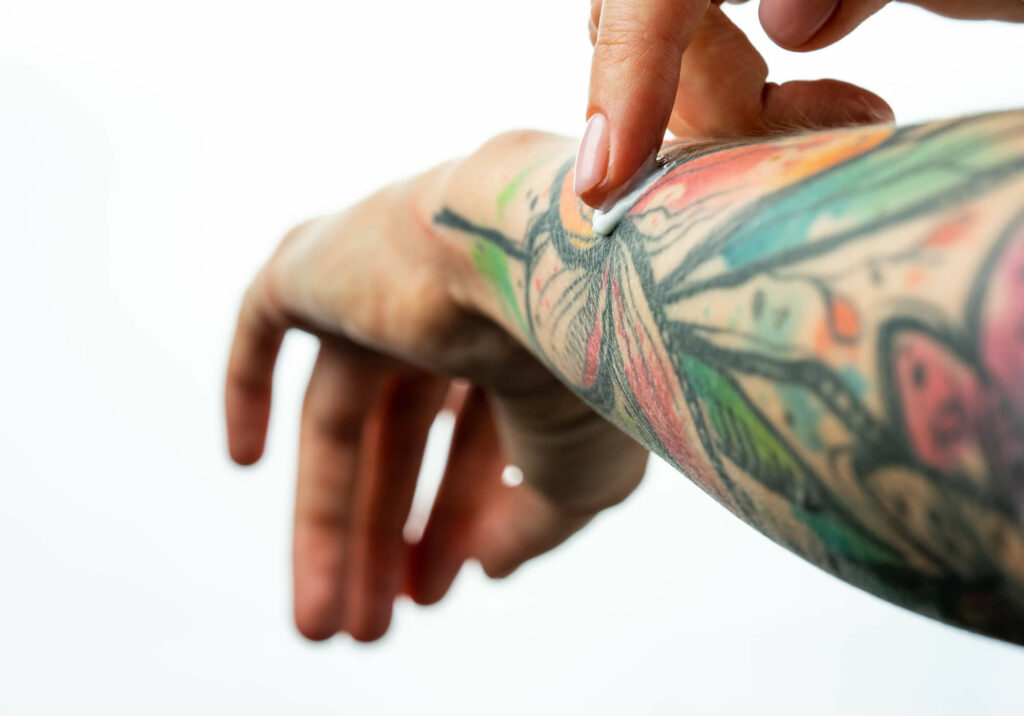There is a technique to alleviate the discomfort associated with tattooing. There are several methods for pain relief, including numbing creams. In this article ‘Does Tattoo Numbing Cream Work’, we have explained how numbing cream is effective and generally safe for most individuals.
These lotions are a popular option, and there are other over-the-counter alternatives. However, it would be best to consider a few things before using these treatments on your skin. Keep reading to find out more.
Does Tattoo Numbing Cream Work?
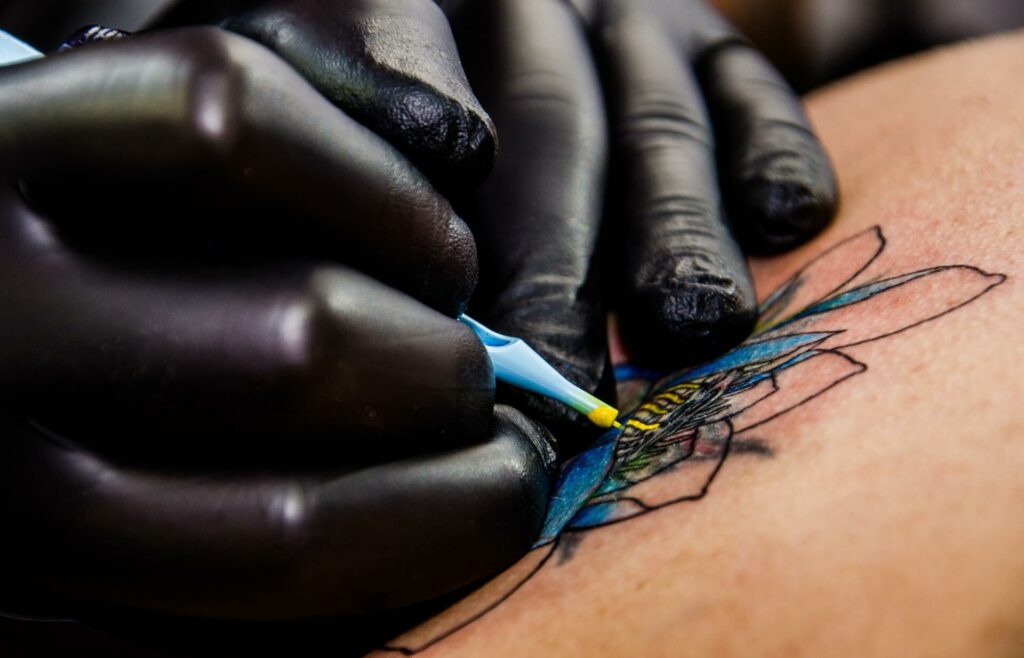
It is the most common inquiry regarding numbing creams and sprays. Many tattoo artists have claimed that numbing tattoo cream does not work, but they are unaware that it takes time to take effect or that it works better when combined with other products.
If you do not give the cream sufficient time to act or use the additional anesthetics required to function properly, it will seem as if the cream has had no effect.
Simply follow the cream’s directions and apply it soon before your tattoo session to have a less unpleasant and more comfortable experience. The quantity of cream in a tube assures that you will have more than enough for a massive tattoo.
Note: Some tattoo artists dislike using numbing cream since it might alter the sensation of the skin during the tattooing process. Others refuse to use it because they believe that experiencing pain throughout the tattooing procedure is part of “earning” one. Even if a customer has sensitive skin, we believe it is part of a tattoo artist’s responsibility to ensure their comfort throughout the session.
For that reason, we suggest having some available.
How Does Numbing Cream Work?
Before getting a tattoo, numbing creams are often used on the skin. Their active components include numbing agents meant to alleviate the discomfort associated with tattooing. There are three primary classes of anesthetics, each with distinct advantages and possible disadvantages.
1. Nerve Deadeners
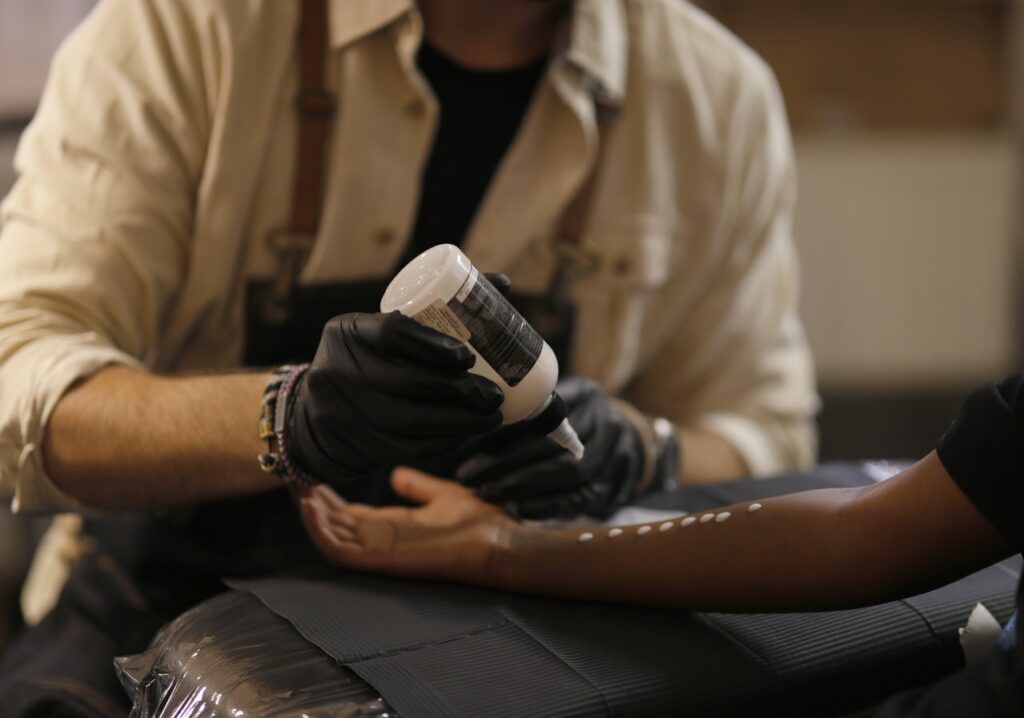
Most tattoo numbing lotions include numbing compounds known as nerve deadeners, such as lidocaine. These molecules prevent neurons from receiving pain impulses, resulting in a temporary absence of sensation. Lidocaine is okay for tattoos and is frequently used to alleviate pain during dental operations and certain medical testing.
One of the disadvantages of tattoo creams that dull nerves are that they only numb the outer layer of skin. Tattoo needles penetrate roughly 1/16″ into the skin’s surface, penetrating the five epidermal layers and the upper dermis. If you have a cream not designed to enter beneath the skin’s surface layers, you will still experience discomfort in the deeper layers when you are pricked.
In addition, lidocaine’s influence often fades off after an hour or two, so you may have to reapply cream a couple of times throughout the session based on how much tattoo work you have done. Avoid the possibility of adverse health consequences by avoiding excessive application.
2. Nerve Blockers
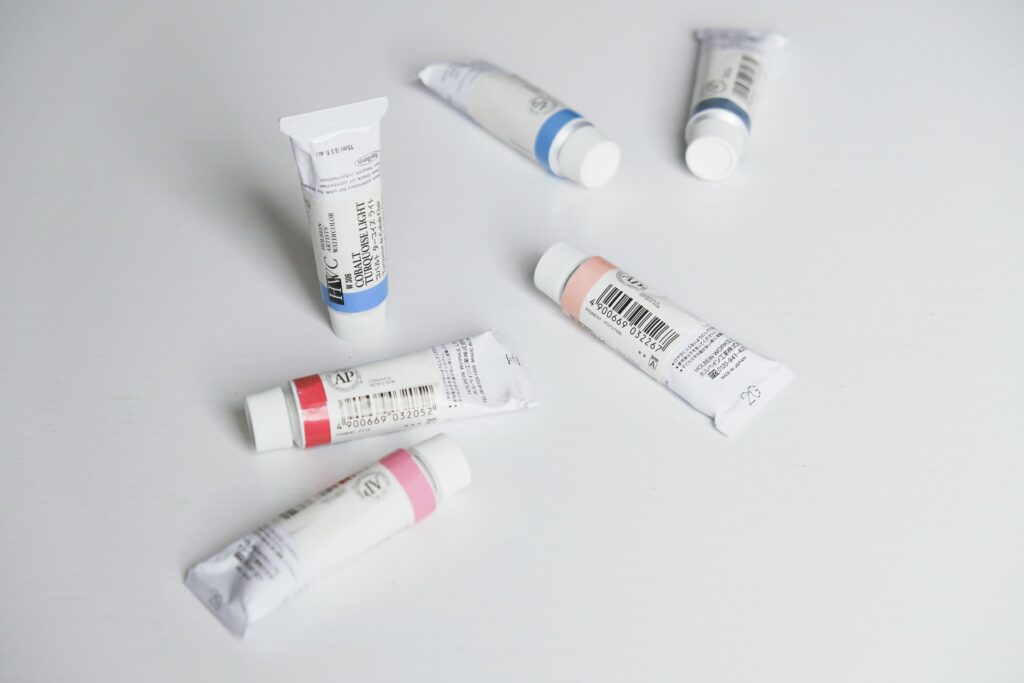
Different nerve blockers, such as benzocaine and tetracaine, function differently. They enable your nerves to detect some feelings while preventing certain nerve impulses from reaching the brain. The effects of creams containing nerve blockers are not fully numbing but dulling the strength of the feelings you experience.
Nerve blockers and nerve deadeners are sometimes mixed in tattoo creams for a more powerful impact. As with other numbing medicines, nerve blockers must be administered with caution and may be hazardous if used excessively.
3. Vasoconstrictors
Vasoconstrictors, which include epinephrine, are the most strong and possibly hazardous category of anesthetics. They function by restricting blood vessels and reducing bleeding and inflammation at the tattoo location. When combined with other anesthetic substances, vasoconstrictors may slow the body’s absorption of them.
A strong, long-lasting topical anesthetic is produced by combining vasoconstrictors with deadeners and nerve blockers. However, there are health hazards linked with the restriction of blood vessels. It may lead to tissue ischemia or lack of oxygen and induce tachycardia, an unusually rapid heart rate.
If the body is not removing numbing drugs from the bloodstream as rapidly as expected, the chemicals might reach hazardous levels. On the market, there are several tattoo creams with various anesthetic compositions.
Consult with your doctor or healthcare professional before selecting a topical anesthetic cream. They may assess your medical history and advise you on the appropriate anesthetic.
Why Is Tattoo Numbing Cream Necessary?

In some instances, applying a numbing cream is driven by personal taste rather than need. While some tattoo fans consider pain an integral part of the “ritual,” there is nothing wrong with desiring comfort throughout the process.
It’s normal if you’re anxious about needles, particularly for your first tattoo. People with a low pain threshold, which may be caused by medical disorders, chronic pain, accidents, heredity, and other causes, may be unable to tolerate the sting of a tattoo needle. Since it is your experience and yours alone, it is totally up to you to choose how you want it to feel.
Some individuals may not be able to get body art without anesthetics, and they may opt for lotions containing more powerful numbing ingredients. Pain tolerance may be influenced by a variety of biological and psychological variables. Common causes of a low pain threshold include:
- Illnesses that cause nervous system damage (such as diabetes)
- Anxiety, depression, or stress
- Genetics
- Prior injuries
- Lack of sleep
- Chronic pain results in hypersensitization.
A low pain threshold is often a component of a person’s genetic makeup. If you have a high pain threshold, it may not be feasible to alter how your body reacts to unpleasant stimuli. Nonetheless, ideas and emotions play a significant part in perceiving pain.
Relaxation and biofeedback are two techniques that may assist you in training your brain and make it easier to bear physical pain.
However, if you are worried about the pain connected with obtaining a tattoo, numbing cream may reduce the discomfort. Knowing that you have choices for minimizing the discomfort may assist in calming your nerves.
Dangers of Applying Numbing Creams
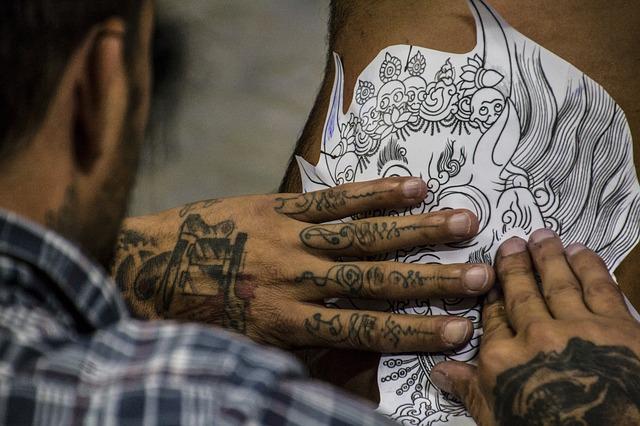
As long as you follow the instructions on the label, numbing creams are usually believed to be safe. Be cautious not to apply the cream too often or in excess. Putting an additional dab of cream on your skin may seem like a good idea, but doing so might result in harmful side effects or toxicity.
All creams may include allergenic preservatives and other components. Be cautious to check the list of ingredients on any cream you buy. If your skin happens to be sensitive, you may want to select a cream with a higher proportion of natural ingredients and fewer additives.
The anesthetic agents themselves can pose health hazards. Again, we urge that you see your doctor before buying numbing cream to address any possible health risks.
Frequently Asked Questions
Does Numbing Cream Affect Tattoos?
Some tattoo artists dislike how it makes the skin feel, although it does not affect the tattooing work, and it keeps the skin “wet” and numbs the client similarly to glides. After the tattoo is completed, begin aftercare as instructed by the artist.
How Painful Is a Tattoo?
There is no universally applicable answer to how much pain a tattoo will cause. The discomfort is equivalent to a cat scratch or a sunburn if you’re unsure what to anticipate.
Can You Take a Shower After a Tattoo?
It is okay for your tattoo to become slightly wet, but it should not be immersed in water or placed under running water for extended periods. Minimize your shower duration and be careful not to irritate your freshly inked skin.
What Is More Painful, Linework or Shading?
Color and shading create greater depth than line work, but contrary to popular belief, many
individuals report that the shading of a tattoo hurts substantially less than the outline. If you have already completed your line work, give yourself a boost of confidence.
What Is a Tattoo Blowout?
Fortunately, a tattoo blowout is not a health-threatening concern. It happens when a tattoo artist injects ink past the top layer of the skin to the fat layer underneath.
In this layer of fat, ink extends beyond the tattoo’s lines. It results in image distortion.
What Is the Duration of the Tattoo Numbing Cream?
After application, the effects of numbing tattoo cream remain for up to three to four hours. After this period, it will eventually become less effective, and the skin will begin to regain its sensitivity. Remember that it should be administered at least 30 to 60 minutes before a tattooing appointment for best effectiveness.
Are Tattoos Capable of Causing Shock?
During a tattoo, your body produces endorphins in a manner resembling shock as a defense mechanism against the assault on the skin. It may produce a dip in blood sugar, resulting in dizziness, nausea, or fainting.
Final Thoughts
If your previous tattoo was excruciating, or if fear of pain prevents you from having your first tattoo, you do not have to grimace and endure the agony. Though you may have heard, obtaining body art does not have to be unpleasant, particularly if numbing cream is used before alleviating the discomfort.


